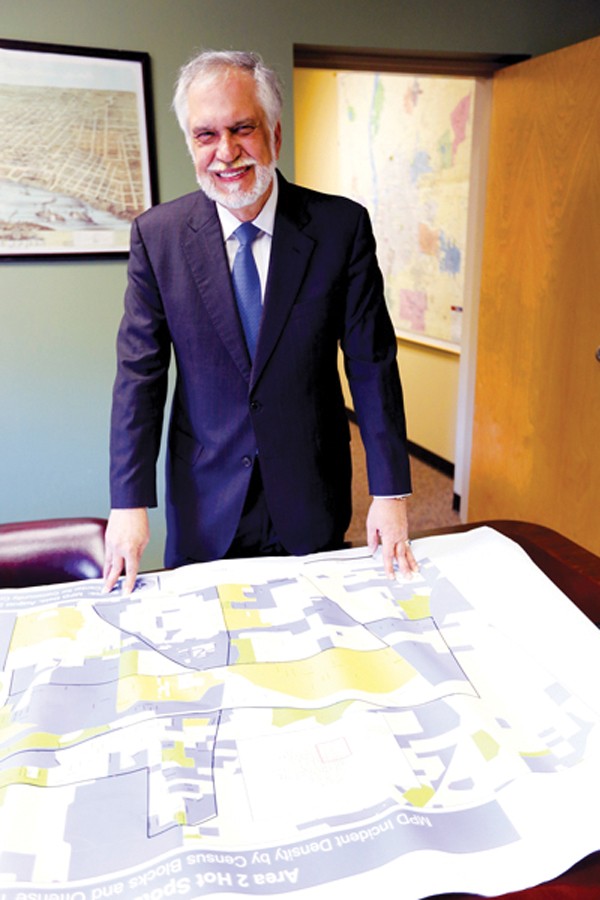In 2005, former Memphis Police Director Larry Godwin introduced a plan to crush crime one statistic at a time.
Called Blue CRUSH, the data-driven initiative uses information collected from Memphis Police Department (MPD) reports to determine local crime hotspots. Aggravated assaults, nondomestic violence, robbery, burglary, and vehicle theft are among the crimes targeted.
The location, day, and time an offense occurs is recorded and analyzed, which helps law enforcement determine where they need to deploy more officers. Crime stats in these hotspots are generally lowered as a result.
Blue CRUSH’s citywide launch was covered in the Memphis Flyer article “A Secret Crush” by Bianca Phillips in December 2006, and the initiative was later profiled in-depth in the cover story “Blue Crush” by Preston Lauterbach in April 2007.
 Justin Fox Burks
Justin Fox Burks
Richard Janikowski
Richard Janikowski, a retired University of Memphis criminology professor, was instrumental in the creation of Blue CRUSH (an acronym for Crime Reduction Utilizing Statistical History). He along with several other analysts from the University of Memphis’ Center for Community Criminology and Research banded together to create the initiative with the MPD.
“The first year saw some modest decreases, and then things started decreasing across the board,” Janikowski said. “By the end of 2010, violent crime was down in Memphis over 24 percent [and] property crime [was down] over 26 percent. It had real impacts that became noticed throughout the country. Police departments from around the world have been coming to Memphis to look at what’s been done.”
The crime-fighting initiative came about after Godwin called a meeting of high-ranking city officials and law enforcement representatives at a local Piccadilly Cafeteria urging the development of new approaches to combat city crime.
During the meeting, Janikowski informed Godwin he could develop a program pinpointing crime hotspots but needed access to all of the MPD’s data on an ongoing basis. After being provided with data packages composed of information on various crimes, Janikowski and his colleagues began examining them on a daily basis, determining what information was useful and how they could best utilize it. They produced information packages for precinct commanders, showing criminal hotspots and frequent days and times criminal activity took place in those areas.
Pilot operations of Blue CRUSH were conducted throughout the end of 2005 and into 2006, exploring what tactics worked and how they could best be adapted. The initiative launched citywide in late 2006.
Nearly a decade later, Blue CRUSH has been responsible for triggering thousands of arrests. And Janikowski said MPD commanders and analysts continue to discover better ways to suppress local crime.
“Commanders have mastered the use of data, how to deploy task forces, and directed patrol,” Janikowski said. “They’ve developed new analysts and new technologies to apply.”
Nevertheless, annually, the MPD experiences a decrease in manpower due to budget cuts, reduction in promotions, and limited resources for recruiting and training new officers.
Janikowski said the MPD’s decline in manpower leaves open the opportunity for Blue CRUSH to become a lost cause.
“I don’t care what you call the crime initiative, the data and the analysis are tools, but the work is done by those men and women in blue on the streets,” he said. “They’re the critical variable. None of it works without them. The problem right now is literally every week MPD’s number of sworn officers is declining. It has been declining for a number of years.”